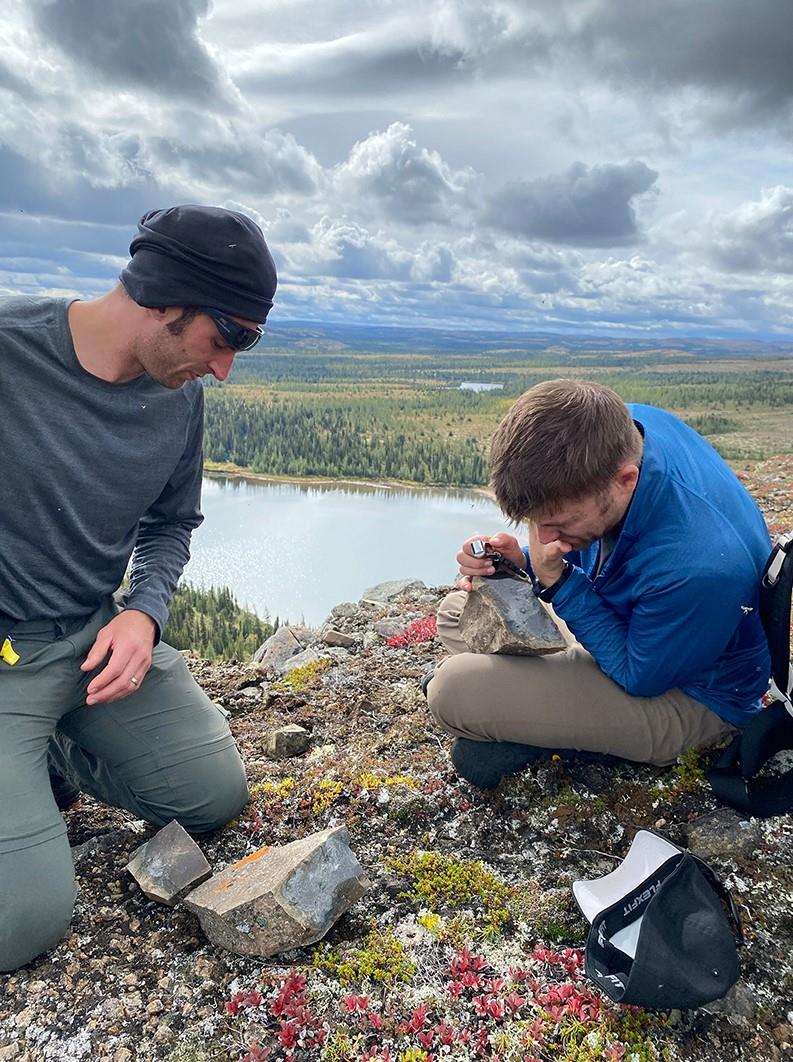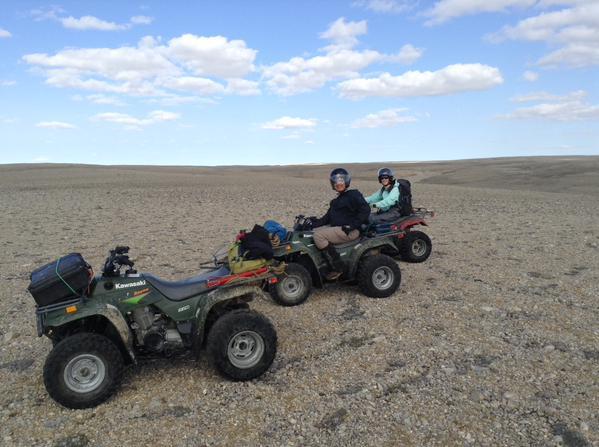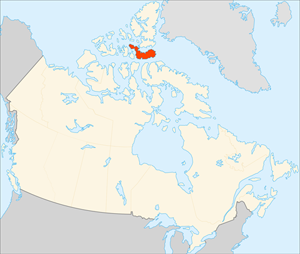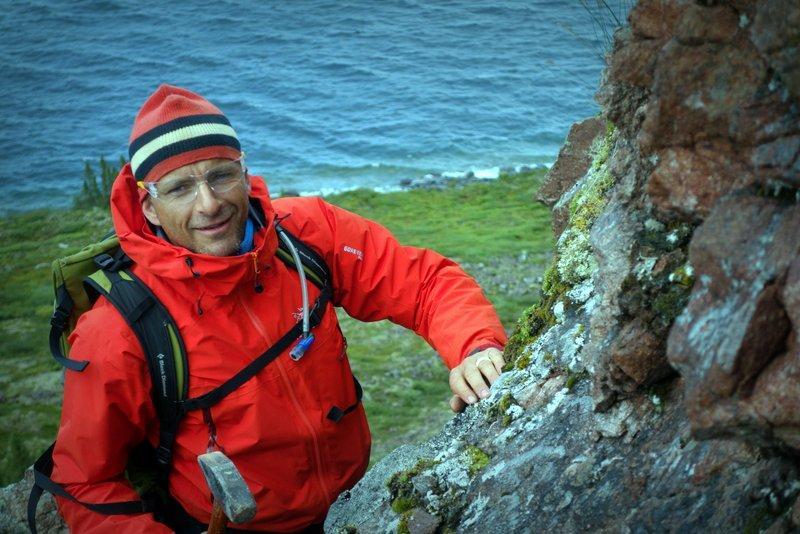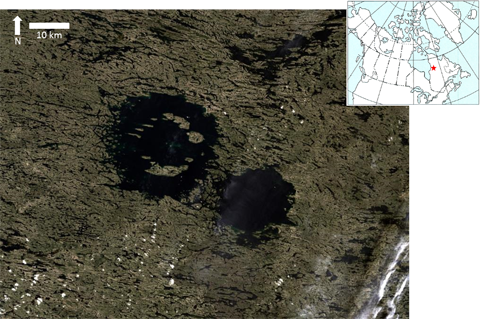Training in geology
Training
Mars, the Moon and asteroids are all possible future destinations for human space exploration missions. Geology will be an important part of the fieldwork carried out on these celestial bodies.
For example, during the Apollo missions, one of the chief duties of the astronauts was to study the geology of the Moon. Lunar samples were collected and brought back to Earth.
Similarly, astronauts must be able to identify pertinent geological structures during their future missions. Their discoveries could contribute to a better understanding of the history of our own planet and that of the solar system.
As part of their astronaut training, Canadian Space Agency (CSA) astronauts participate in geology field expeditions to Canada's North.
On most of their geology field expeditions, our astronauts served on a research team from Western University's Centre for Planetary Science and Exploration (CPSX) led by Gordon Osinski.
Mistastin (Kamestastin) crater, Newfoundland and Labrador
Read the blog post about the lunar geology training held in 2023
View the photo album of the 2023 geology training at the Mistastin (Kamestastin) crater in Labrador
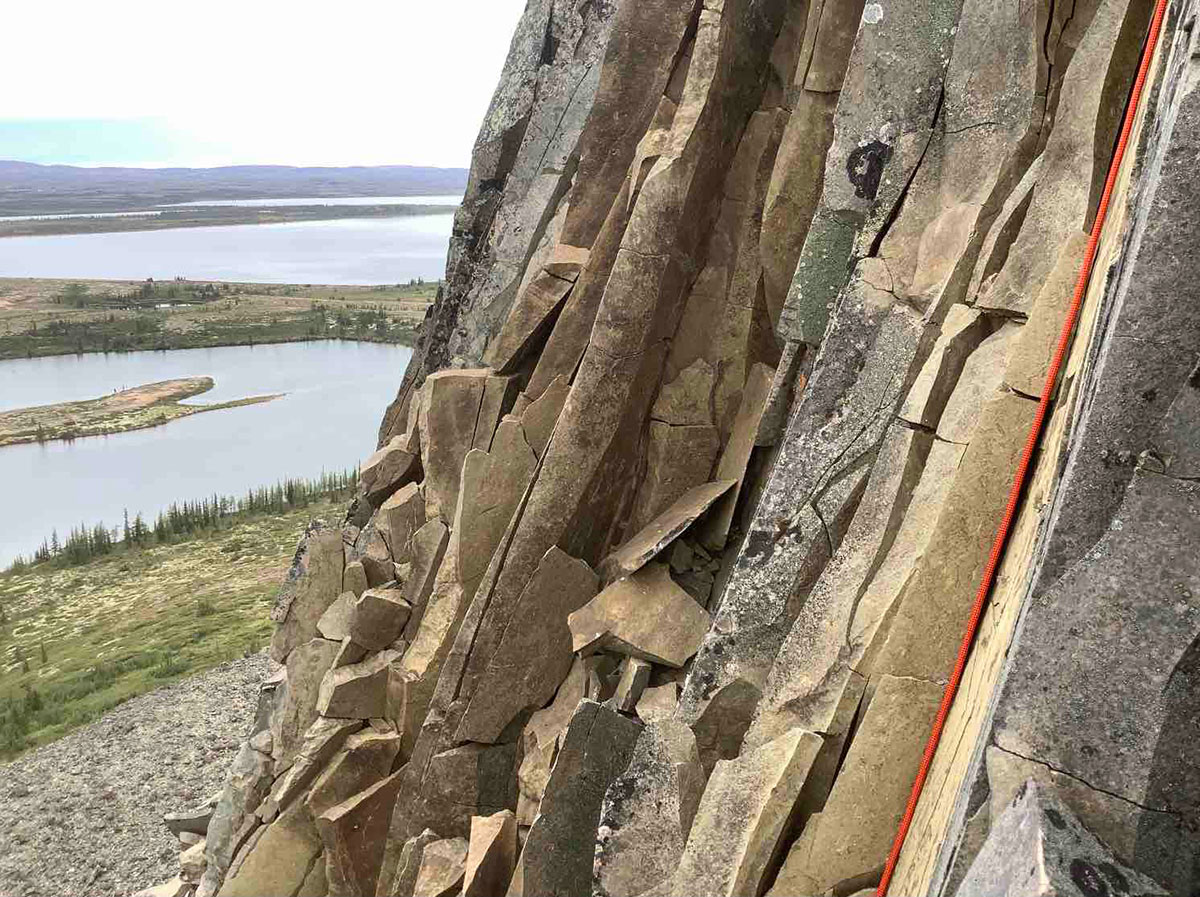
Impact melt rock at the Mistastin crater in Labrador. (Credit: Gordon Osinski)
- Canadian astronauts: Jeremy Hansen and Jenni Gibbons
- Duration: to
- Place: Mistastin crater
Mission
- Practise geology in a meteorite impact crater, the Moon's most common landform
- Define the best instruments and techniques for geology work on the lunar surface
- Sample a rock called anorthosite, which is rare on Earth but abundant on the Moon
CSA astronaut Jeremy Hansen and his NASA crewmate Christina Koch, both Mission Specialists on the upcoming Artemis II mission, take part in geology training in northern Labrador with CSA astronaut Jenni Gibbons.
This meteorite impact crater, one of 31 in Canada, is a crucial training ground as we return humans to the Moon, because it's the best representation we have on Earth of what astronauts will find there.
Mistastin (Kamestastin) crater, Newfoundland and Labrador
- Canadian astronaut: Joshua Kutryk
- Duration: to
- Place: Mistastin crater
Mission
- Practise geologic fieldwork with a realistic training ground for the lunar surface
- Learn how to identify the best rock samples to bring home from future missions
- Handle a rock called anorthosite, which is rare on Earth but common on the Moon
On this two-week expedition in northern Labrador, the astronauts and geologists visited a 28‑kilometre diameter impact crater formed 36 million years ago, when an asteroid crashed into Earth.
The astronauts hiked along its steep ledge, collecting rock samples and practising their geology skills. Future Moon explorers will be required to choose the best rock samples to bring back with them, to maximize the scientific return back on Earth.
Kaskawulsh Glacier, Yukon
View the photo album of Kaskawulsh Glacier
- Canadian astronaut: David Saint-Jacques
- Duration: to
- Place: St. Elias Mountains, Yukon
Mission:
- Learn methods and techniques for conducting geological fieldwork that can be applied to future space missions, for example to Mars or other planets.
- Help researchers develop better predictive models used to make projections of glacier response to climate change.
- Act as expedition medical officer.
- Enhance his expedition-related skills.
During this two-week expedition, David assisted the Simon Fraser University Glaciology Group, led by researcher Gwenn Flowers, in the study of the interaction of glaciers and freshwater bodies.
Ice is present elsewhere in the universe. It is now known that the planet Mars has polar ice caps and that other planets in the solar system are orbited by moons with frozen water.
Therefore, there is a link between terrestrial and planetary exploration!
Victoria Island, Northwest Territories
View the photo album of Victoria Island, Northwest Territories
- Canadian astronaut: Jeremy Hansen
- Duration: to
- Place: Canadian Arctic Archipelago
Mission:
- Confirm the origin of the crater
- Conduct geological reconnaissance studies
- Participate in studying the geology of the island and the impact rocks
- Get an introduction to instruments used on planetary exploration missions
Under the Canadian Space Agency's Science and Operational Applications Research (SOAR) program, the team developed new tools and techniques for using RADARSAT-2 images to:
- improve geological mapping
- promote land use management
- assist resource exploration in the Canadian Arctic
Clearwater Lake, Quebec (now called Wiyâshâkimî Lake)
View the photo album of Clearwater Lake, Quebec (now called Wiyâshâkimî Lake)
- Canadian astronaut: David Saint-Jacques
- Duration: to
- Place: Northern Quebec
Mission:
- Study the processes related to the formation of impact craters
- Learn methods and techniques for conducting geological fieldwork that can be applied to future space missions, for example to the Moon or an asteroid
David and the research team studied West Clearwater Lake, since the geological structure of East Clearwater Lake is submerged. These two annular lakes were formed by meteorite impacts in the distant past.
Devon Island, Nunavut
View the photo album on Flickr called Devon Island, Nunavut
- Canadian astronaut: Jeremy Hansen
- Duration: to
- Place: High Arctic
Mission:
- Accompany the research team studying impact cratering processes.
- Study the Haughton crater.
- Learn methods and techniques for conducting geological fieldwork that could be applied to future space missions, for example to the Moon or an asteroid.
Astronaut Jeremy Hansen explains why astronauts undergo geology field training in remote regions and describes his expedition to Devon Island. (Credit: Canadian Space Agency)
This extremely remote and uninhabited island in Baffin Bay, Nunavut, features one of the best exposed and preserved impact craters on the planet.
The island's isolation presents many challenges: the team had to be flown to the site and had to manage with very limitedsupplies and support.
On Earth, evidence of the existence of impact craters is continually being erased by plate tectonics, volcanism and erosion.
Nevertheless, about 180 impact craters have been documented to date, 30 of them in Canada.
